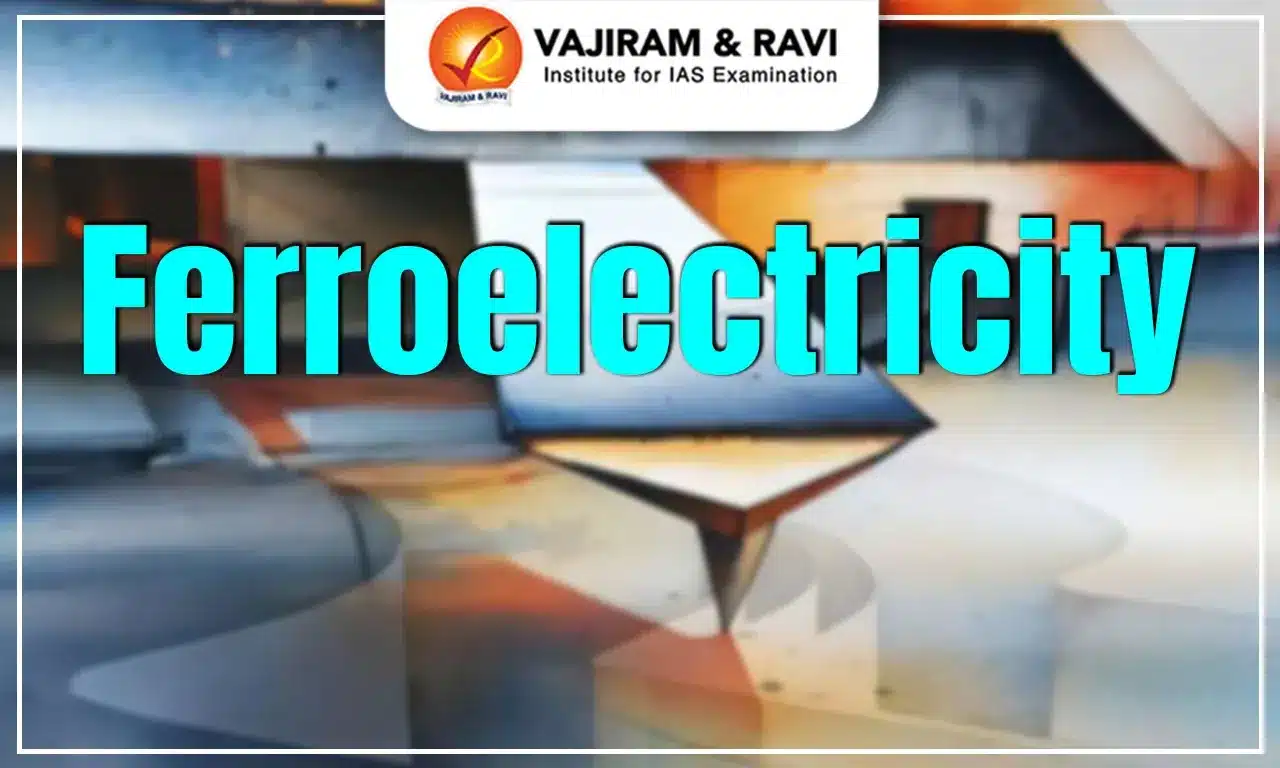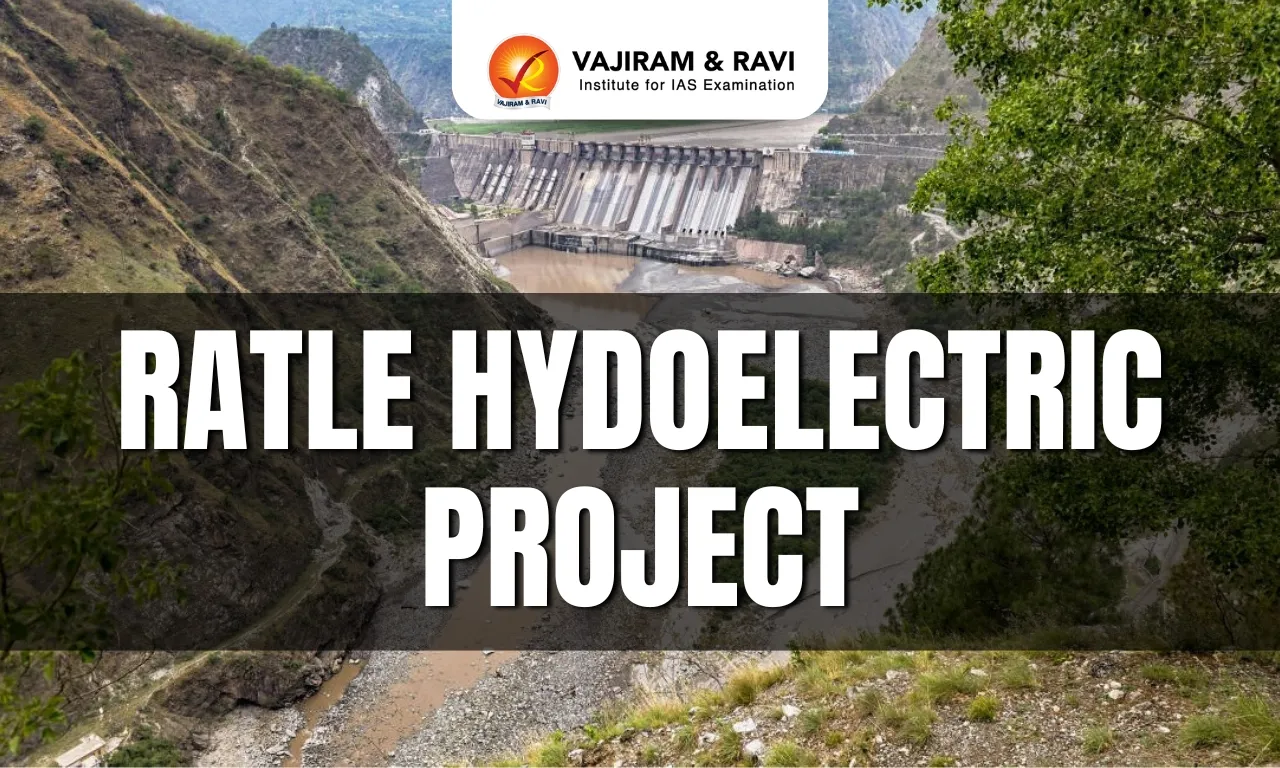Ferroelectricity Latest News
Researchers at Oak Ridge National Laboratory (ORNL) have developed a breakthrough technique to visualise the dynamics of domain walls with unprecedented detail.
Fundamentals of Ferroelectricity
- Ferroelectricity is a property of certain non-conducting crystals or dielectrics that exhibit spontaneous electric polarisation, where the centres of positive and negative charges separate, making one side of the crystal positive and the other negative.
- This electric polarisation can be reversed by applying an appropriate external electric field.
- The term ferroelectric is derived from ferromagnetism, where magnetic domains align spontaneously; similarly, in ferroelectrics, electric dipoles align spontaneously in domains.
- Examples of ferroelectric materials include barium titanate (BaTiO₃) and Rochelle salt.
- Ferroelectric domains are clusters where dipoles are aligned. These domains can be reoriented by strong electric fields.
- The delay in response when domains reorient is termed ferroelectric hysteresis, analogous to ferromagnetic hysteresis.
- Ferroelectricity vanishes above a critical temperature called the Curie Temperature, where thermal agitation disrupts dipole alignment.
Domain Walls in Ferroelectrics
- Domain walls are the boundaries between differently polarised regions in a ferroelectric material.
- These walls often exhibit electrical or magnetic properties different from the surrounding domains.
- Some domain walls may become electrically conductive even when the bulk of the material is non-conductive, or magnetically active even if the domain itself is nonmagnetic.
- These unique properties make domain walls potential candidates for nanoelectronic components for memory, sensing, and signal processing in low-power devices.
New Visualisation Technique by ORNL
- This method, called Scanning Oscillator Piezoresponse Force Microscopy (SO-PFM), is capable of detecting both slow and abrupt movements of domain walls under rapidly fluctuating electric fields.
- Traditional methods offered only static snapshots, like a photo before and after a football play, missing the intermediate dynamics.
- The new method creates dynamic visualisations, helping researchers understand how domain walls evolve and how much energy is required to move them.
- It uses precision-timed control electronics with atomic force microscopy (AFM) to monitor real-time changes, a capability not previously possible.
Ferroelectricity FAQs
Q1: What is ferroelectricity?
Ans: Ferroelectricity is a property of certain materials that exhibit spontaneous electric polarisation that can be reversed by applying an external electric field.
Q2: What are ferroelectric materials used for?
Ans: They are used in non-volatile memory devices, sensors, actuators, capacitors, and energy storage technologies.
Q3: How is ferroelectricity different from piezoelectricity?
Ans: While all ferroelectric materials are piezoelectric, not all piezoelectric materials are ferroelectric. Ferroelectricity requires switchable polarisation.
Source: PHY
Last updated on December, 2025
→ Check out the latest UPSC Syllabus 2026 here.
→ Join Vajiram & Ravi’s Interview Guidance Programme for expert help to crack your final UPSC stage.
→ UPSC Mains Result 2025 is now out.
→ UPSC Notification 2026 is scheduled to be released on January 14, 2026.
→ UPSC Calendar 2026 is released on 15th May, 2025.
→ The UPSC Vacancy 2025 were released 1129, out of which 979 were for UPSC CSE and remaining 150 are for UPSC IFoS.
→ UPSC Prelims 2026 will be conducted on 24th May, 2026 & UPSC Mains 2026 will be conducted on 21st August 2026.
→ The UPSC Selection Process is of 3 stages-Prelims, Mains and Interview.
→ UPSC Result 2024 is released with latest UPSC Marksheet 2024. Check Now!
→ UPSC Prelims Result 2025 is out now for the CSE held on 25 May 2025.
→ UPSC Toppers List 2024 is released now. Shakti Dubey is UPSC AIR 1 2024 Topper.
→ UPSC Prelims Question Paper 2025 and Unofficial Prelims Answer Key 2025 are available now.
→ UPSC Mains Question Paper 2025 is out for Essay, GS 1, 2, 3 & GS 4.
→ UPSC Mains Indian Language Question Paper 2025 is now out.
→ UPSC Mains Optional Question Paper 2025 is now out.
→ Also check Best IAS Coaching in Delhi
Tags: Ferroelectricity prelims pointers upsc prelims current affairs

















